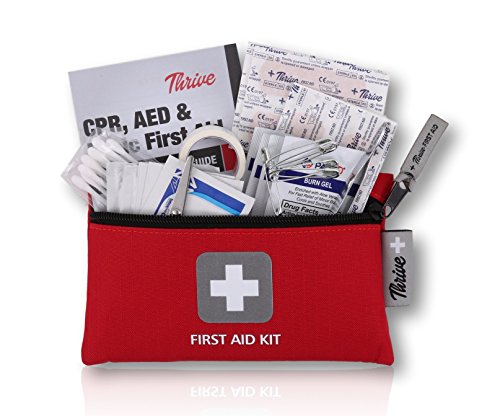I don’t love running, but I do it anyway because it is good for my body and my brain. To stay motivated, I sign up for races throughout the year; the looming prospect of running a half marathon is just scary enough to convince me to run regularly. But even though running is healthy, it also comes with a few safety risks—scary traffic, dehydration, trips and falls, and injuries, among others.
Running Safety Checklist: Take the Right Gear on Your Run

Fortunately, with the right supplies, it’s easy to stay safe when you hit the pavement.
Check this list to make sure you have the right gear before your next run.
What you always need
There are some things you should take with you on every single run, even if you’re only going a mile.
What you need when it’s dark
Lots of people run early in the morning or in the evening after work. That means you might be running when the sun isn’t out to light your path, which can be dangerous, especially if you’re near cars. Take a few supplies if you’re running in the dark so you can see and be seen while you’re getting your daily exercise in.
What you need on a long run
If you’re going to be running for more than an hour, you’ll need some extra supplies to keep up energy.
What you need on a trail
Running on trails can be peaceful and beautiful, but you do need some extra safety gear in addition to your hydration pack and snacks.
Pepper spray is, hopefully, not necessary on a normal run, but if you’re on a secluded trail, you’re more vulnerable. We suggest bringing a small container just in case of emergencies.
Safety for runners—other tips that will keep you safe
The right gear can go a long way toward keeping you safe on your run, but there are a few other things you should keep in mind.
- Avoid running alone in a secluded area. Instead, look for local parks with running paths, tracks at your local college or high school, or a populated neighborhood without tons of traffic.
- Run with a buddy if you do go somewhere unfamiliar or secluded. I run alone when I go to the park or jog around my neighborhood, but if I’m running on a trail I take someone with me. This doesn’t just protect me from potentially dangerous strangers, it also protects me from myself—if I trip and fall or take the wrong turn and get lost, there’s someone there to help me out.
- Run in well-lit areas when you can. It will be easier for others to see you and you’ll be less likely to trip on an unseen branch lying across your running path.
- Run facing oncoming traffic. Running on the street isn’t ideal, but if you have to run on the road, run toward oncoming traffic so you can see cars clearly.
- Make sure you can hear your surroundings. I’ll be honest, running can be very boring, and I’d have a tough time making it through my runs without music, podcasts, or audiobooks. However, it is important that you don’t completely tune out. Turn the volume down low or run with only one headphone in so you can still hear the world around you.
- Let someone know where you are. I track all my runs with Strava. That means my friends might give me a hard time if I skip my morning run, but it also means they can see where I am. It’s also handy when I run in a new city—if I get lost on my run, I have a clear map back to where I started. Strava Premium also includes a beacon feature so you can share your location with trusted contacts and they can track your location in real time.
Whether you run to clear your head, burn calories, improve your aerobic health, or prep for a race, you should be able to feel safe—even when you’re running alone. Pack the right gear and follow the tips above to stay safe while enjoying your run.
Do you run? Share your safety tips in the comments below! We’d love to from you.













